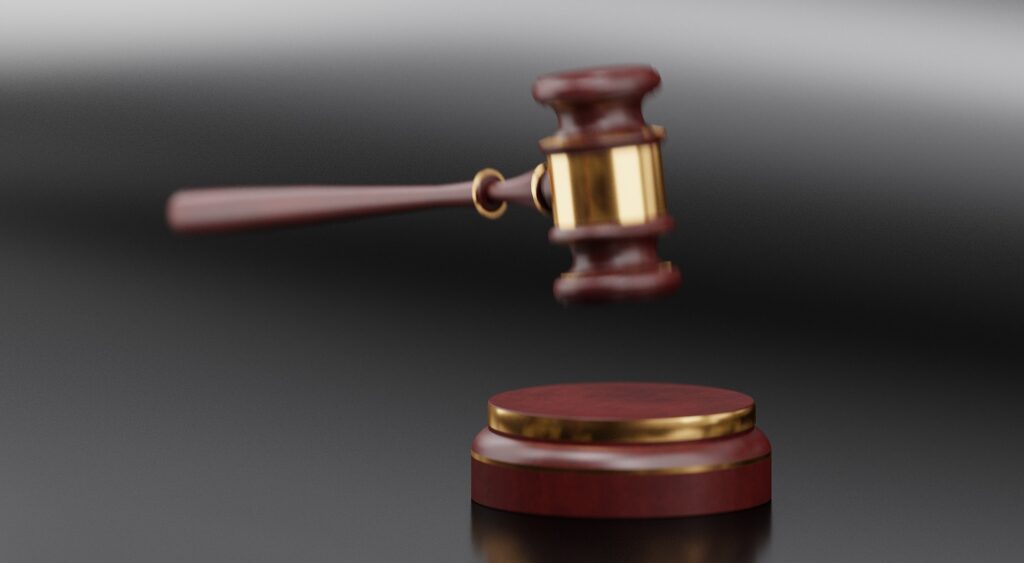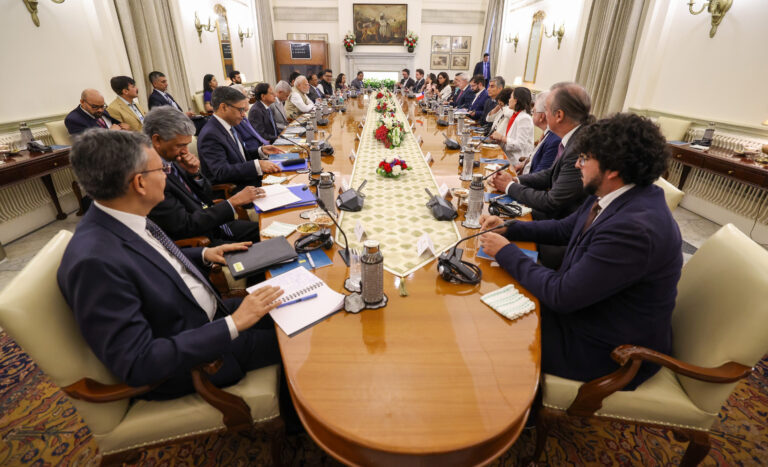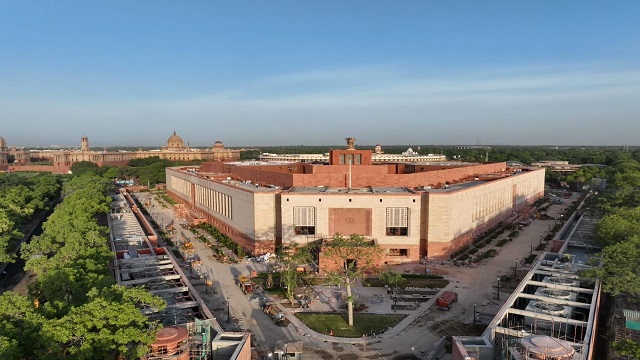
Counterpoint: Who will bell the judiciary?
![]() By Vivekanand Jha*
By Vivekanand Jha*
Lord Alfred Thompson “Tom” Denning, often described as the most influential judge of the 20th century, famously coined the very fundamental legal dictum ‘Be you however so high, the law is still above you’, which is proudly cited across judiciary around the world. But when the judiciary in India, unlike anywhere in the world, resists tooth and nail even the remotest of insinuation against shifting away from an institutionalised system of Collegium to the democratisation of appointing judges, doesn’t it defy this fundamental dictum?
Ironically, whereas the judiciary enforces or perseveres to enforce accountability and demands transparency in other organs of the government, like the Legislative and the Executive, it resists even the remotest of attempts to institute reforms by the legislative body to make the higher judiciary itself accountable and far more transparent to the people of India on the ground that the very independence of the judiciary is purportedly sought to be muzzled by the vested interest; the vested interest is prima facie attempting to strangle the higher judiciary by putting an albatross around its neck; by crystallising a deep-rooted sense of schadenfreude against the higher judiciary to expediently browbeat it into an abysmal submission.
A case in point is the National Judicial Commission Bill, 2022 that proposed major reforms in the Indian Judiciary. It was introduced in Rajya Sabha as recently as in October 2022 as a private member bill by after the majority of voice votes were in its favour. It envisaged the appointment of High Court and Supreme Court judges. In fact, the legislative attempt stood vehemently punctured at the altar of the entire judiciary of Higher Courts–where the bar and the bench, in the exhibition of remarkable unity, joined hands against the Bill. Unequivocally, the government summing up the courage to introduce the bill in Parliament, finally developed the cold feet, which resulted in jettisoning the bill, putting it to abeyance, in perpetuity.
Ironically, in such a Constitutional democracy, such as ours, where the Constitution is considered sacrosanct; in fact, the very raison d’etre of the Constitution is premised on the principle of egalitarianism, as enshrined in Article 14, how could the higher judiciary consider itself beyond the ambit of the same? How could the judges who have arrogated to themselves the right to adjudicate the issues, as per the letter and spirit of the Constitution, consider themselves above it, for torpedoing the moves of the governments, from time to time, to enforce a sense of discipline in the higher judiciary? They do so in the name of so-called encroachment by the legislatures into their privileged domain. Now, the moot question: Where the Constitution empowers them to be the judges of their own omissions and commissions? Where does the Constitution suggests, even remotely that, they should institutionalise the practice of quid pro quo –you appoint me as the judge of the Supreme Court, I will appoint your son when the time comes–the cronyism of the worst form that has come to mirror today’s Higher Judiciary?
The Collegium in the closed-door meetings decides the names of the people to be appointed as judges for the High Courts and Supreme Court. Once the list of people nominated is prepared, it is sent to the government for the formality of background checking. This is the most formidable rot in the higher Judiciary. Worse still, whereas the lower judiciary has some form of examination to compete in order to be appointed in the lower judiciary, the higher judiciary–especially in High Courts and Supreme Court, only the Collegium decides on the names, no examination, nothing! In fact, only ten years of practice in the High Court or Supreme Court is the prerequisite for qualifying as a judge. Doesn’t this explain why so many sons and daughters of the judges qualify as judges? Also, there is a growing perception that the lawyers, who are relatives of the judges, often get favourable judgments. That a caucus of lawyers comes to surround the judges is also not unknown. Small wonder then, the aggrieved petitioners, notwithstanding the merit of their cases, beg before such favourite lawyers to take their cases, and in the process, lawyers charge the hefty fee for their remuneration. Hasn’t the cronyism of the worst order come to symbolise the Indian judiciary today?
With the benefits of hindsight, the grand judgment of Keshavananda Bharati versus the State of Kerala case comes readily to our mind, where the great Constitutional jurist, Nani Palkhivala, by virtue of his poignant argument, had saved the Indian democracy by insulating the basic structure of the Indian Constitution from its infringement by the legislators. In fact, a divided verdict of 7:6 had sealed the day for the continuation of Indian democracy while aborting the impending threat of Indian democracy being replaced by totalitarianism. However, today Indian Judiciary stares nakedly at the immediate reform, for the watchdog of the Constitution, if it continues to be the victim of ‘ Bhai- Bhatijavad’, where the opportunities for growth for the vast army of lawyers, coming from the pedestrian background, continues to remain suspended, the very raison d’etre and summum bonum of the Higher Courts in the country stand defeated.
Unequivocally, the Supreme Court stands today in the witness box of the People’s Court, for its own grave commissions. How long does it want its own accountability to the People of India to remain in suspension? Why does it want itself to play the role of being above the law when it is always eager to sit on judgment upon the conduct of legislators and executives? How long does it continue to play the role of an arbiter of a nation’s fate staying beyond reproach? Regrettably, whereas the entire world has the check and balances for its judiciary to regularise it, the apex body of the Indian judiciary bristles at even the remotest of attempts to bring it under some form of accountability. Significantly, The Contempt of Court’s act, 1971, is the living testimony of the same, where the judiciary vehemently opposes any amendment of the same–it is only in India where the court verdicts are not subject to public criticisms.
No wonder, the judiciary is crying for immediate reform; it is crying for bringing it to par with other wings of government. Hence against the backdrop, the famous observation of the late Vinod Mehta, the former editor of Outlook, comes readily to our mind, when talking about the apex court, he had said, ‘ It is the only holy cow which needs to be slaughtered”.
Indeed today the higher judiciary, especially the Supreme Court, which hitherto had made everyone stand in the witness box, today stands itself in the witness box to explain, why it has been evading its own accountability and transparency since independence. Why should it not be subject to public scrutiny for all its omissions and commissions like any other Constitutional body?
It is the time that the People’s Court pronounces its own verdict: it is high time the institutionalised quid pro quo must cease, and the judiciary should be as transparent as any.
*Author, Academician and Public Intellectual. The views expressed are personal.





